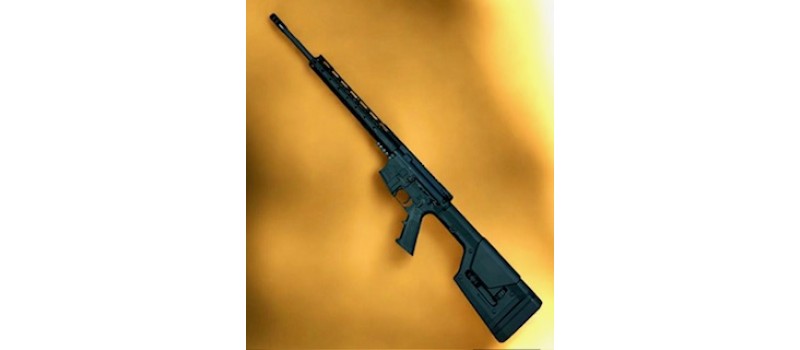In the world of firearms, the debate between the 5.45x39 and 5.56 NATO rounds is a topic that has intrigued enthusiasts, hunters, and military personnel alike. Both cartridges have their origins in Cold War-era military strategies and have since found their way into civilian markets, where their performance and characteristics are often compared. But when it comes down to it, which is better? In this blog post, we will explore the history, performance, and applications of these two popular cartridges to help you make an informed decision.
Historical Background
The 5.56 NATO cartridge has been a significant part of American military history, having been adopted as the standard intermediate rifle round by the US Military in 1977. This adoption marked a shift in military tactics and weaponry during a time when accuracy and firepower were increasingly prioritized. On the other side of the Iron Curtain, the 5.45x39 cartridge was developed by the Soviet Union in the early 1970s, intended to replace the larger and heavier 7.62x39 round. This shift aimed to provide Soviet forces with improved accuracy and reduced recoil, features that were becoming increasingly important on the modern battlefield.
The 5.56 NATO and 5.45x39 rounds emerged as central elements of their respective military doctrines during the Cold War. Each cartridge reflected the evolving priorities and strategies of their countries' armed forces. The lighter, faster 5.56 NATO was tailored for the advanced assault rifles that became standard-issue in Western militaries, emphasizing accuracy and a flatter trajectory. Meanwhile, the 5.45x39, with its innovative bullet design, was designed to enhance the AK-74 rifle's capabilities, providing Soviet troops with a more controllable and accurate weapon.
The historical development of these cartridges reveals a fascinating parallel evolution driven by the competitive nature of Cold War-era advancements in military technology.
Ballistic Performance
Ballistic performance is a key factor when comparing any two cartridges. The 5.56 NATO is renowned for its high velocity and flat trajectory, making it suitable for engagements at various ranges. It typically fires a lighter bullet than the 5.45x39, contributing to its reputation for long-range accuracy. The flatter trajectory of the 5.56 NATO enables shooters to maintain precision over greater distances, which can be a significant advantage in diverse shooting scenarios.
In contrast, the 5.45x39 is praised for its stability in flight and its ability to penetrate obstacles, thanks to its unique bullet design. This design often features a longer, more aerodynamic shape with a hollow cavity in the nose, which aids in maintaining stability and accuracy, especially in shorter-range engagements. While it may not achieve the same high velocities as the 5.56 NATO, the 5.45x39 excels in maintaining consistent performance under various conditions.
Another point of comparison is the bullet drop. The 5.56 NATO, due to its higher speed, generally experiences less bullet drop over distance, allowing for more predictable performance at extended ranges. The 5.45x39, with its heavier bullet, tends to have more pronounced bullet drop, which might require shooters to adjust their aim more frequently as distances increase.
Terminal Ballistics
When examining terminal ballistics, we focus on how each cartridge performs upon impacting a target. The 5.56 NATO cartridge is noted for its tendency to fragment upon impact, which can create multiple wound channels and cause significant internal damage. This fragmentation effect is largely velocity-dependent, meaning it performs best at higher speeds and can be less effective at longer ranges where velocity decreases.
The 5.45x39 cartridge, in contrast, is known for its distinctive "tumbling" effect upon impact. Instead of fragmenting, the bullet tends to yaw and rotate as it enters a target, creating a larger and more irregular wound channel. This tumbling can be especially devastating in soft tissue, potentially increasing stopping power without relying on fragmentation.
Both cartridges exhibit unique terminal effects that cater to different tactical scenarios. The fragmentation of the 5.56 NATO can be highly effective in creating incapacitating wounds, especially at closer ranges where velocity remains high. On the other hand, the tumbling action of the 5.45x39 provides consistent and reliable performance across a variety of engagement distances, making it particularly valuable in unpredictable combat environments.
Understanding these differences in terminal ballistics can help users select the cartridge that best aligns with their specific tactical needs and scenarios.
Availability and Cost
The 5.56 NATO round enjoys widespread popularity and production, especially in the United States, where it serves as the standard for many civilian rifles. This high demand and extensive manufacturing result in lower costs and greater accessibility for shooters. You can easily find 5.56 NATO ammunition in most gun stores, online retailers, and even bulk purchase options, making it a convenient choice for many firearm enthusiasts.
In contrast, the 5.45x39 cartridge, while available, is less commonly found, particularly outside its regions of origin, such as Eastern Europe. Its limited production and import restrictions in certain areas can lead to higher prices and sporadic availability. As a result, shooters may find it more challenging to procure this ammunition consistently, which could be a consideration for those who prefer to have a steady supply on hand.
For those who favor the unique ballistic performance of the 5.45x39, the higher cost might be justified despite its less frequent availability. Enthusiasts often seek out specialized suppliers or online vendors that cater to niche markets to secure their preferred ammunition. However, the added effort and expense are important factors to consider when deciding between these two cartridges, especially for users who prioritize ease of access and budget.
Tactical Applications
In evaluating the tactical applications of the 5.45x39 and 5.56 NATO cartridges, it's important to consider the distinct environments and scenarios where each excels. The 5.56 NATO is renowned for its performance in open terrains and long-range engagements, where its accuracy and flat trajectory offer substantial benefits. This makes it a favored choice among military and law enforcement personnel who often operate in varied and expansive landscapes.
In contrast, the 5.45x39 cartridge is highly effective in close-quarters combat and environments where shorter engagement distances are prevalent, such as urban settings and dense forests. Its ability to penetrate barriers and maintain stability through obstacles makes it particularly valuable for tactical units operating in these conditions. The unique bullet design of the 5.45x39, which enhances its performance in shorter ranges, aligns well with the demands of quick, decisive engagements.
For tactical teams that prioritize versatility and adaptability across different scenarios, the choice between these cartridges can be influenced by the specific nature of their operations. Whether it’s the need for precision at extended ranges or the capability to navigate through confined spaces and penetrate barriers, each cartridge offers distinct tactical advantages that can be leveraged based on the mission requirements and operational environment.
User Experience
The 5.56 NATO is favored by many users for its manageable recoil, which can contribute to faster follow-up shots and reduced shooter fatigue. This characteristic is particularly beneficial for those who engage in extended shooting sessions or competitive shooting events. The accuracy and consistency of the 5.56 NATO make it a reliable choice for precision-oriented activities, from target shooting to tactical operations.
On the other hand, the 5.45x39 is appreciated for its distinct handling and the unique feel it offers. Users often highlight its stability and control during rapid-fire sequences, which can be advantageous in dynamic and unpredictable scenarios. The slightly higher recoil of the 5.45x39 compared to the 5.56 NATO is often described as manageable and even enjoyable by enthusiasts who value its robust performance in diverse environments.
Moreover, the user experience with the 5.45x39 can be particularly rewarding for those who enjoy experimenting with different types of ammunition and setups, as its less common status can add an element of exclusivity and satisfaction. Whether in recreational shooting or tactical training, both cartridges offer unique experiences that can cater to a wide range of preferences and needs, making it essential for users to test both to see which aligns best with their shooting style and objectives.
Pros and Cons
When evaluating the pros and cons of the 5.45x39 and 5.56 NATO, several considerations emerge. The 5.56 NATO excels in long-range accuracy due to its high velocity and flat trajectory, making it ideal for varied shooting scenarios. Its widespread availability and lower cost also make it an accessible choice for many shooters. However, its performance can be less effective in close quarters or when barrier penetration is necessary.
On the flip side, the 5.45x39 stands out with its stable flight and reliable performance, especially in shorter-range engagements. Its ability to penetrate obstacles and maintain accuracy through barriers adds a tactical advantage in urban or dense environments. Despite these benefits, the 5.45x39 can be more challenging to find and often comes with a higher price tag.
Ultimately, the choice between these cartridges depends on your specific needs—whether you prioritize long-range precision, cost-efficiency, and accessibility, or stability and performance in close-quarters and obstacle-laden scenarios. Both rounds offer distinct advantages, so understanding your primary use case will guide you to the best decision.










